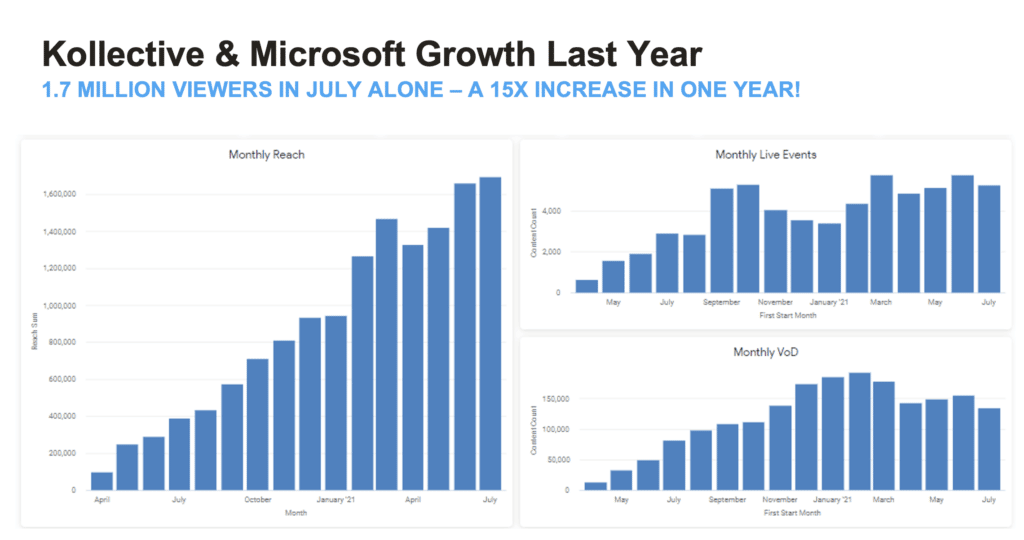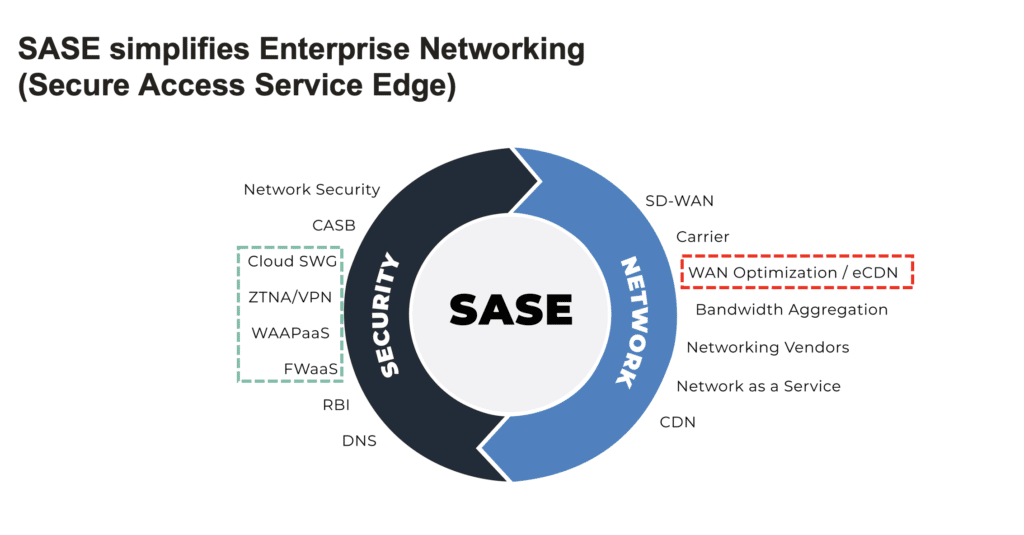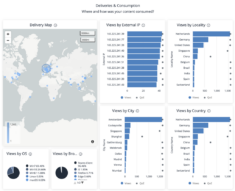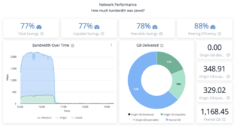During our recent webinar Employee Connectivity in Healthcare and Beyond: Scaling Live Events to a Hybrid Workforce, a panel of experts from Microsoft, Kollective, and Children’s Mercy Hospital, had a roundtable discussion about how the pandemic and now hybrid work has transformed communications and collaboration. They reviewed the challenges faced by communications teams and network administrators when connecting a hybrid workplace with live events and covered strategies to build more inclusive communications. Learn how Kollective and Microsoft are working together to provide Healthcare companies with innovative solutions that address the needs of the modern workplace.
Panelists:
- Host – Carson Heady – Microsoft, Director, Health Solutions – U.S. Health & Life Sciences
- Matt Sims – Microsoft, Senior Customer Success Manager, Modern Communications – U.S. Health and Life Sciences
- PJ Hartzell – Multi-media Content Producer at Children’s Mercy Hospital
- Garrett Gladden – Kollective, V.P. of Product
- Neal Lauther – Kollective, V.P. Global Technical Solutions
The Evolving Modern Workplace
The modern workplace has been reimagined. Hybrid and flexible work models have brought video to the forefront, making it the primary medium that businesses use to communicate and collaborate. Video’s growth in the enterprise has been significant. In July 2022 alone, Kollective delivered Teams Live Events to over 1.7 million viewers – a 15x increase in one year!

New Challenges
Since the pandemic, businesses have been confronted with new challenges when using live events to connect their distributed workforce. Neal Lauther, V.P. Global Technical Solutions at Kollective, identified three areas where they occur:
Running Events – Equipping yourself with the right tools is key to running successful live events. Event producers and network administrators need to be laser focused on their objectives and properly prepared for events, regardless of their size. A few of the questions that need to be addressed before running an event include: Where are presenters connecting from? What kind of equipment do they have? What kind of content are they presenting? Are they familiar with the technology so they can run the event? These are just a few of the questions that need to be addressed prior to an event.
Delivering Events – Live events are now a preferred medium businesses use to deliver critical messaging. If an event fails and the messages don’t land, that is a problem for leadership and employees. Understanding where viewers are connecting from, if they are connecting remotely through a VPN, and if your network has the capacity to deliver content to those accessing it from the office, are a few of the considerations that need to be considered before running a live event.
Analyzing Events – Robust live event analytics are key to understanding how well an event performed. Having the data to prove whether employees were engaged, whether the event reached all necessary parties, and whether the quality was high, helps teams understand if there are issues that need to be addressed to ensure a better run during the next event.
Modern Collaboration Tools
To tackle these new communications challenges, modern tools are needed. Matt Sims, Senior Customer Success Manager, Modern Communications – U.S. Health and Life Sciences at Microsoft, described how Teams Live Events address these issues:
- An advanced yet familiar producer experience to manage content and speakers
- Scalability to support up to 10,000 attendees with options to support up to 100,000 view-only participants with the help of an ECDN
- Support for asynchronous collaboration and consumption with VoD via Yammer and Stream
- Built-in event analytics and the ability to integrate with an ECDN like Kollective for expanded insights to understand how people are connecting, where they are connecting from, and the quality of their experience
“The very clear design intent with Teams Live Events is to commoditize the toolkit for content creation, delivery and then consumption.”
– Matt Sims – Microsoft, Senior Customer Success Manager, Modern Communications – U.S. Health and Life Sciences
Emerging Content Delivery Challenges
The increased use of live events and hybrid work has led to delivery challenges and creative network solutions that have risen in response.
Network Complexity
In the modern hospital, there is a vast array of devices connecting to networks delivering critical and sensitive information. Oftentimes, sophisticated networks like these present hurdles when trying to deliver live events. There are numerous concerns to consider to understand how network complexity may impact deliverability:
- Wireless networks – their design can be complex like tunneled or bridge connections
- Devices can connect but where does that traffic go? Does it connect to a data center?
- Users connecting from their workstation – is it wired or wireless, what kind of device are they using, and how is traffic being routed?
- Remote users – are they using a company device or their own, are they secure, can they directly access cloud services, or do they need a VPN?
These challenges need to be understood and addressed before running live events. Many organizations are modernizing their network topology to embrace cloud services and allow users to connect from any location.
Security Standards
Matt Sims has found that security comes into every conversation he has with customers. To address these concerns, Microsoft Teams has security built-in from the ground layer. Taking a Zero Trust approach to security, Microsoft uses an identity-based security model with Azure Active Directory. This lends itself well to hybrid work, ensuring that one’s data and device are secure no matter where or how they connect. Explore Security and Microsoft Teams to understand how Teams follows security best practices and procedures.
SASE Environments
Secure Access Service Edge (SASE) is an emerging way of modernizing networks to support the hybrid workplace. Neal Lauther explained that the old way of setting up corporate networks does not consider the needs of modern workplace (e.g. addressing network complexity and security postures). Security is front and center with SASE and it meets high-security needs in a manner that is easy to turn on. It also provides networking policy and governance to cover the multiple ways hybrid and remote workers access content.

Kollective ECDN, as part of a SASE environment, delivers in the face of these network challenges by adapting to where the user is whether that is a VPN or a cluster location.
“Flawless live events, clear messages delivered, no impact to other critical services. That’s the goal.”
– Neal Lauther – Kollective, V.P. Global Technical Solutions
Inclusive Communications
Ensuring that every employee has equal access to high-quality live video is one of the primary concerns in the hybrid office. Whether employees are viewing a live event from the office, home, or a coffee shop, the event’s success depends on whether each attendee experienced a flawless, uninterrupted stream.
Reaching Every Employee
PJ Hartzell knows that reaching every employee in a hospital setting with live events has never been more important. At Children’s Mercy Hospital, the production team works with internal communications to execute a plan for upcoming events to ensure high in-person attendance for the event. For those unable to attend the event in-person, the production team immediately uploads the video to Microsoft Stream and notifies the organization that the event is available to view on-demand. Offering synchronous and asynchronous communications ensures that messaging gets to those who need it when and where they can access it.
Return to Office & Hybrid Work Planning
The modern workplace is continuously flexing to meet the needs of employees and businesses alike. To support companies shifting to hybrid work, Microsoft’s Work Lab has developed a series of guides called How to Hybrid that focus on the non-technological considerations of the return to office and hybrid work planning.
“We’re still working through all of these new challenges which are pretty exciting because it feels like we’re reengineering what we want work to be like for this new era.” – Matt Sims – Microsoft, Senior Customer Success Manager, Modern Communications – U.S. Health and Life Sciences
Collaborating With Stakeholders
Leadership is utilizing live events due to the simplicity and effectiveness of getting a message to land across a large group. Neal Lauther has noticed, “The ease has created the need.” Events are so easy to set up when the right systems are in place that they are shortening in duration and increasing in frequency.”
Children’s Mercy Hospital has seen a strong adoption of live events for one-to-many communications from the highest levels. Their CEO began a series during the pandemic called Live Connects to present information from high-level meetings to a broader audience to keep leadership in touch with the workforce.
Resources
Scaling Live Events Checklist – Download this checklist to develop an effective and measurable plan to scale live events to a hybrid workforce.
Microsoft Live Events Assistance Program – A free service offered to Enterprise customers that provides basic training as well as technical and non-technical consideration of how to run successful Teams Live Events
Microsoft Workshops – Microsoft Teams training to help employees connect in a hybrid workplace.
Kollective Free Trial – Start a 30-day free trial of Kollective ECDN in just six clicks to begin scaling Teams Live Events.





